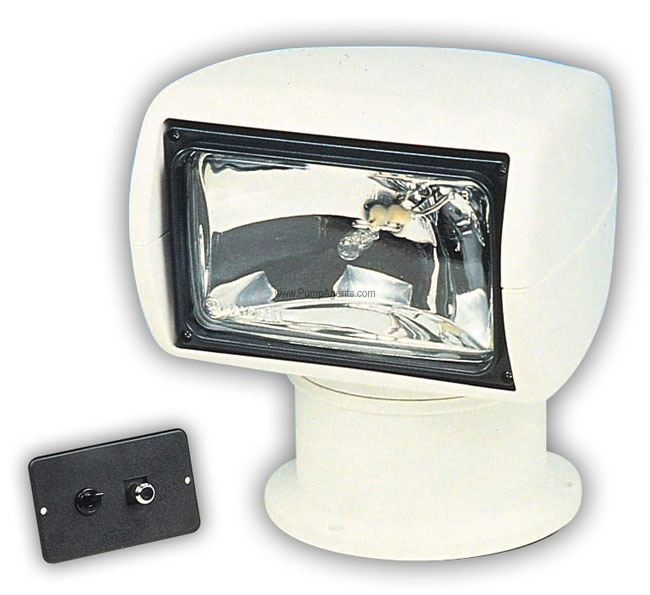Jabsco # 60020-0000 Series 135SL Remote Control Searchlight

Jabsco # 60020-0000
Jabsco catalog # 60020-0000, Series 135SL Remote Control Searchlight. Searchlight is 12 Volt DC.
Price : $ 400.20
Product Information :
The Jabsco 60020-0000 is a 12 Volt DC, Series 135SL Remote Control Searchlight. Developed with the smaller boat in mind, the 5 Inch by 3 Inch halogen-sealed beam delivers 100,000 candlepower, providing 1 lux at 885 feet (262m). The 135SL series rotates 320 degrees horizontally and 75 degrees vertically. Control is by remote control and joystick. The advantage of the remote control is that it allows you to direct the light in the best location for maximum effectiveness. They are an increasingly popular addition on power boats, helping locate buoys, moorings and channel markers.
Features :
Product Specs :
Easily replaceable halogen sealed beam delivers 100,000 candlepower.
Supplied complete with joystick remote control.
Optional secondary full control panel for dual helm stations.
320 degrees horizontal rotation, 75 degrees vertical sweep.
All materials are non-corrosive.
Complete with 15' cable, with optional extension cables.
50 watt 3-1/2 Inch x 6 Inch bulb
White thermoplastic housing and base
Long life gear drive
Low amp draw
Patented clutch mechanism prevents motor damage when running against limit stops
Parts and Accessories for Jabsco model 60020-0000
Applications
Ideal for boaters..locate buoys, moorings, chan nel markers, etc. Ideal for RV'ers..pin point road signs, campsites, or use as backup light. See whats at sea or on deck when youre boating at night. A marine searchlight has to be capable of performing a range of tasks from locating buoys to illuminating a narrow channel and, occasionally, searching for a man overboard. Therefore, it needs to be designed to offer the best combination of beam spread and intensity for both shorter and longer range work. Typically, our spot beams have a 7 degrees beam spread as opposed to 40 degrees on a flood beam and will consequently reach at least 3 times further. We quote performance of our searchlight range in two ways candlepower and lux. Candlepower is a useful guide to actual light produced, but does not measure the efficiency of reflector design to project that light at the target. The most relevant comparison guide is lux, which is the measurement of actual light available at a given distance. In order to be able to distinguish a reasonable level of detail, a level of one lux is generally considered to be necessary.